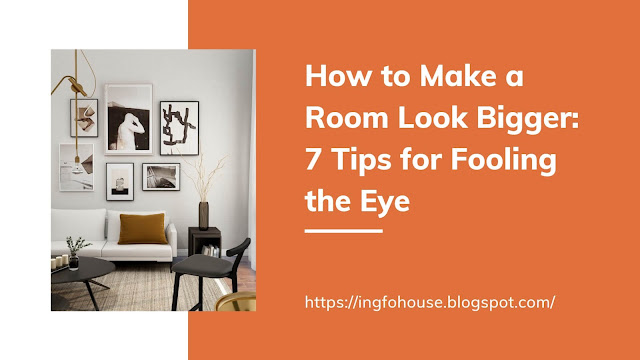How to Make a Room Look Bigger: 7 Tips for Fooling the Eye
How to make a room look bigger: 7 Easy Tips
1. Use contrasts and light colors that make rooms look bigger
It's really known in the design world that light paint colors make a room seem bigger and brighter. Light and bright walls reflect light more, creating a spacious feeling, which makes the room feel bright and spacious. Darker colors tend to absorb light, so making the space feel smaller. Creating a decorative wall by making an accent wall is a good method to make an room look larger. Painting the wall in an appealing color that's in line with the design will complement the decor without overpowering it.
What colors make your room feel larger? To create the best impression, pick soft tones like off-white, blues, and greens, and remember to maximize brightness in your space to make it easy to take in. And here's a final hack Try painting your wall trim and moldings a lighter color so that they stand out more. The walls will appear farther back, making your space appear larger. Here, we present 10 cool neutral colors, which can help you get started.
2. Open up your space with creative lighting
That natural light highlights the breadth of the interior of any room, which makes it look larger. But if you don't, don't be disappointed. With creative lighting design, you can make significant changes to the interior of your space. Take into consideration the thought that this simple change can make a big difference.
If you have nearby access to natural light, bring that light inside through large windows or curtains. Use sheer window treatments, or pull them open wide, to let an abundance of natural light in. If the view isn't to your liking, add potted plants or flowers near the windows and place floor lamps to help brighten the space.
Check out 19 designer tips on Elle Designs for even more inspiration. Ideas suggested by the design team include choosing otherworldly paint colors or more colorful lamps.
3. Cut the clutter
Strive to apply the principles of Marie Kondo to your room if you want to feel more comfortable there. It's imperative to let go of your clutter to create a sense of peace and openness within.
Minimalism also applies to your walls. Try not to cover your walls with pictures. A single large-scale painting is better than a collection of small paintings when considering how to design a room appear more spacious. And try to remain as uncluttered as possible. Remove large area rugs in order to make the room appear to have more space.
4. Create a focal point
Strive to establish one focal area that will make the room appear larger. In the dining room, this is probably the table. In the bedroom, it s the bed. Make that focal point the center of attention. Arrange the furniture to create an upward concentration, and consistently aim to avoid cluttering the remainder of the room.
Yvonne, a designer at StoneGable, describes how the center of a space stands out from its other elements, like fireplaces, works of art, or windows that display beautiful views.
5. Use mirrors
I've often wondered, Do mirrors make rooms feel bigger? the answer is a resounding Yes, mirrors make rooms feel bigger. Use a focal object or point your mirrors toward the focus to give the illusion of depth. Mirrors also reflect both natural and artificial light to make a room brighter during the day and night. Placing a mirror near a window to reflect the world outside is especially effective.
Mirrors on the walls and glass tables can also open up a room's design, or you could put mirrored cabinet doors in your room. Have you ever considered installing mirrors on your floor? That, too, is a smart way to create an impression of a bigger area.
6. Get creative with furniture
The right furniture can make a difference in how a room is perceived. For starters, use multifunctional furniture, such as a chest that can be used as a coffee table, a sofa, or a bed with drawers. Expandable dining tables, folding tables, and nesting tables, which can be tucked away when not in use, are also good ideas.
Items of uncertain height and bulk may require up a lot of space. Go for a sofa with exposed legs and arms, which ensures there is enough space to comfortably walk around the coffee table.
7. Maximize your room arrangement
Place the furniture in your room so that it fits into the available space. Do not obstruct walkways with oversized furniture. Also, make sure the path to the exit is not blocked. When furniture or accessories block the way into an area, it will look cramped.
The diagonal is the longest straight line in any room. When you place furniture at an angle, the eye will always be drawn along the longer wall. Bonus You often have additional storage space behind your furniture.
You can maximize available room by making the most of your under-bed storage or using creative uses for closet space, as well. What empty wall do you have? Apartment Therapy reveals how and why designers rely on floating shelves and other creative solutions.
